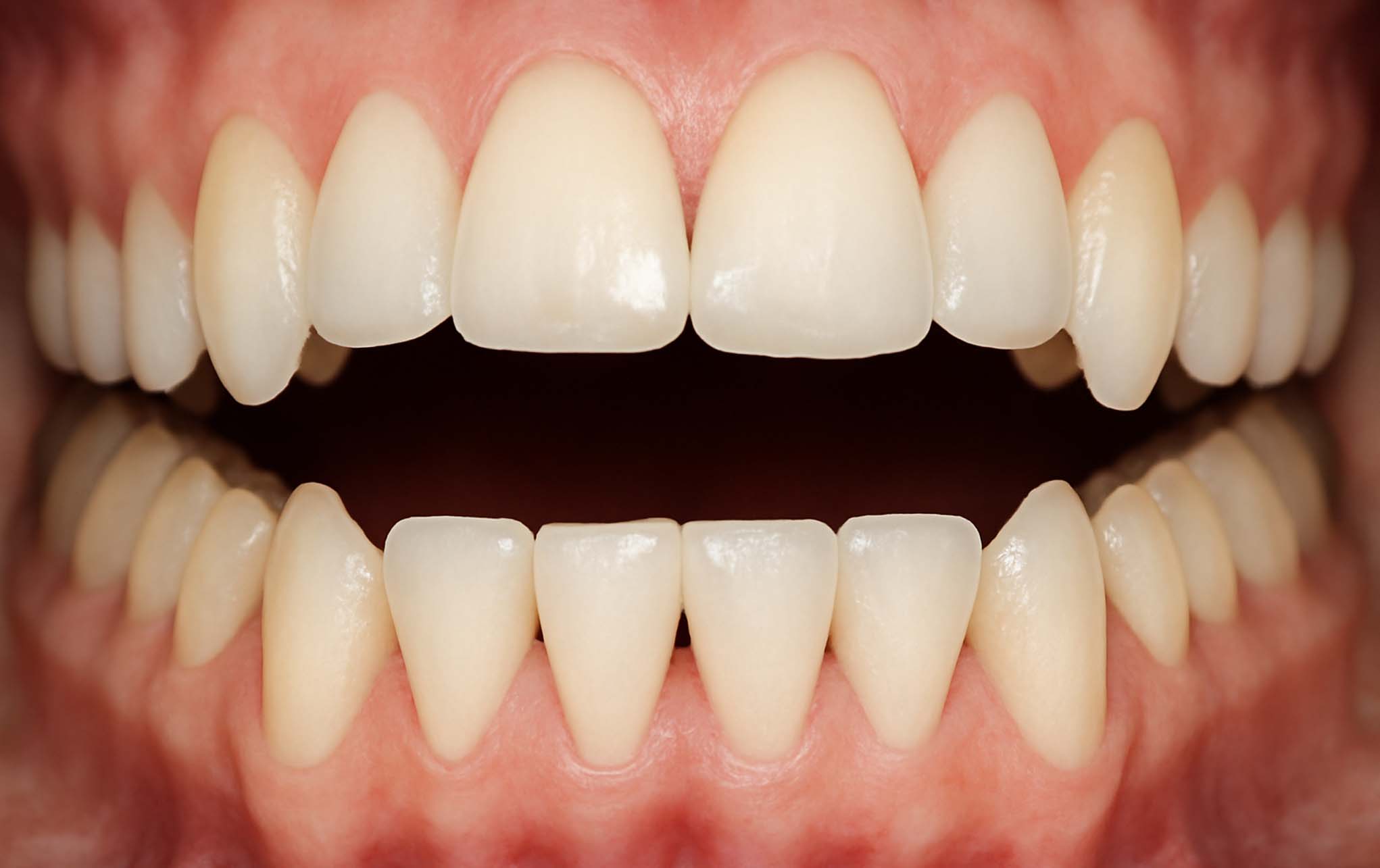What Is an Open Bite ?
An open bite is a type of malocclusion where the upper and lower teeth do not make contact when the mouth is closed, leaving a visible gap. This condition may affect either the front (anterior open bite) or back (posterior open bite) of the mouth.
Open bites can lead to functional issues, such as chewing difficulty, speaking, and may also cause long-term oral health problems if not addressed properly.
Types of Open Bite

1. Anterior Open Bite
This occurs when the upper and lower front teeth do not overlap when the mouth is closed. This misalignment can make biting into food difficult and may result in speech problems, particularly with sounds requiring tongue-to-tooth contact.
2. Posterior Open Bite
A posterior open bite occurs when the back teeth (molars and premolars) do not make contact during biting or chewing. This misalignment can reduce chewing efficiency and may necessitate comprehensive periodontal treatment.
3. Dental vs. Skeletal Open Bite
-
Dental Open Bite: Caused by improper tooth eruption, often influenced by habits such as thumb sucking or tongue thrusting.
-
Skeletal Open Bite: Results from abnormal jawbone growth, often due to genetic factors. Skeletal open bites typically require more complex treatments, including orthognathic surgery, which may be part of a broader periodontal treatment plan.
Causes of Open Bite

What Causes an Open Bite?
Open bite is a type of malocclusion where the upper and lower teeth do not touch when the mouth is closed. Below are the most common causes of open bite in children and adults:
1. Open Bite from Prolonged Pacifier or Bottle Use
Extended use of pacifiers or bottles beyond infancy can push the teeth out of alignment, leading to anterior open bite.
2. Open Bite Caused by Lower Lip Sucking
Chronic lip sucking applies pressure on the front teeth and can cause them to shift, contributing to open bite development.
3. Mouth Breathing and Open Bite
Breathing through the mouth instead of the nose can affect tongue posture, leading to improper oral development and misalignment.
4. Forward Tongue Posture as a Cause of Open Bite
Resting the tongue in a forward position, especially during swallowing or at rest, pushes the front teeth and prevents normal bite closure.
5. Protrusive Teeth and Bite Misalignment
Teeth that grow forward instead of vertically may block proper contact between the upper and lower arches, resulting in open bite.
6. TMJ Disorders (TMD) and Open Bite
Temporomandibular joint dysfunction can affect jaw movement, leading to misalignment of the bite, including open bite.
Impact of Open Bite on Gum Health
- Increased Pressure on Gums and Teeth
Open bite can cause abnormal pressure on the gums and teeth, leading to inflammation and gum disease (gingivitis or periodontitis). This excess pressure can damage the gum tissue and even result in more severe gum problems if left untreated. - Difficulty Cleaning Teeth Properly
With open bite, gaps between teeth tend to increase, making it harder to clean the teeth effectively. This can lead to a buildup of plaque and bacteria, which contributes to gum disease and other oral health issues. - Jaw Misalignment and Its Impact on Gums
Open bite may be caused by jaw misalignment. If left untreated, this can result in chronic gum problems and even bone loss around the teeth. Misalignment affects the gum health over time, leading to inflammation and gum recession.
Impact of Open Bite on Dental Implants
- Peri-implantitis
Peri-implantitis is an inflammatory condition affecting the tissues surrounding a dental implant, often leading to implant failure if untreated. In patients with open bite, abnormal pressure on dental implants can cause inflammation in the tissues surrounding the implant (peri-implantitis).
This condition is similar to gum disease but specifically affects the area around the implant and can lead to implant failure if not addressed. - Uneven Distribution of Biting Forces
Open bite causes uneven distribution of biting forces between the teeth and implants. This misalignment can damage the implants, potentially causing them to fail or shift out of place, especially if excessive force is applied during chewing. - Challenges in Placement and Fit of Implants
For patients with open bite, placing and aligning dental implants properly can be more challenging. If the teeth and jaw are not properly aligned, additional treatments, such as crown lengthening or the use of corrective devices, may be necessary to ensure successful implant placement. - Impact on Chewing Function and Implant Performance
Because open bite prevents full contact between the upper and lower teeth, patients may experience difficulty chewing. This can translate to excessive pressure on dental implants, leading to discomfort or even implant failure if the forces are not properly managed.
Treatment Options for Open Bite
The appropriate treatment for an open bite depends on the severity and the cause. Here are some common treatment options:
- Braces or Clear Aligners: Traditional braces or Invisalign can gradually reposition teeth and close the open bite.
- Behavioral Therapy: Addressing harmful oral habits such as thumb sucking or tongue thrusting can prevent worsening of the condition.
- Temporary Anchorage Devices (TADs): Small, screw-like implants can be used in conjunction with braces to guide teeth into proper alignment.
- Orthognathic Surgery: In severe skeletal open bites, jaw surgery may be required to correct the alignment of the jawbones.
Conclusion
Open bite not only creates difficulties for gum health but can also negatively affect the success of dental implants. Proper diagnosis and early intervention are crucial to prevent these complications.
In severe cases, advanced treatments such as jaw surgery or corrective orthodontics may be needed to address the open bite and improve both gum health and implant functionality.
Sources


2 Comments
Very good
Great to hear! Every smile is different, and we’re here to guide you through your options